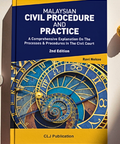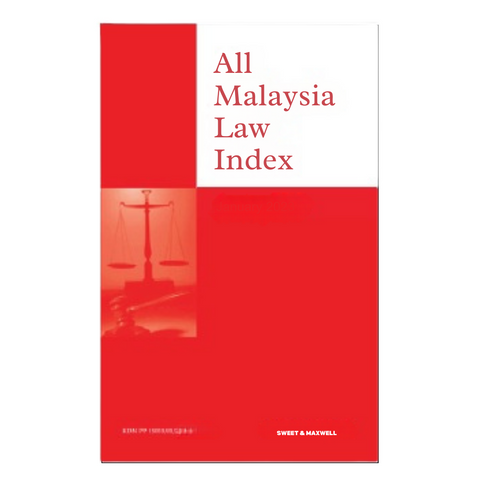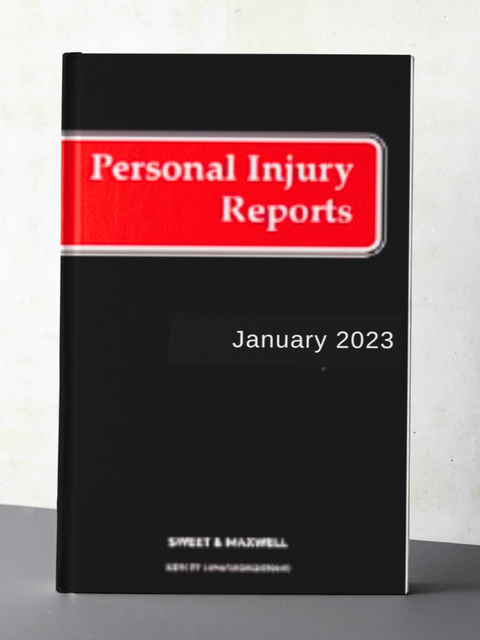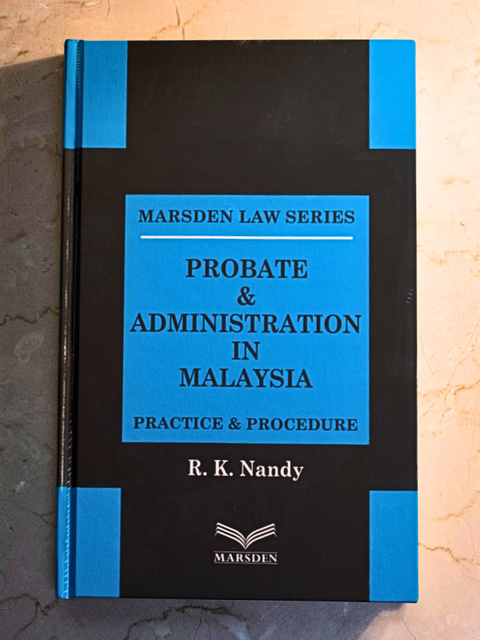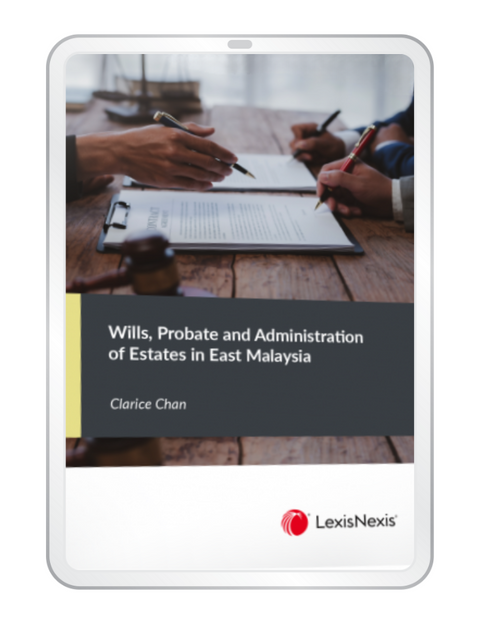




The Law of Damages 2nd ed by Professor Andrew Tettenborn
The Law of Damages 2nd ed
| Author | Professor Andrew Tettenborn (General Editor); David Qilby QC (Editor) |
| Publication Date | 2023 (South Asian Edition) |
| ISBN | 9788180389115 |
|
Format |
Hard Cover |
| Publisher | LexisNexis |
In its second edition, this indispensable guide to the Law of Damages offers a thorough and authoritative explanation of the legal principles used in evaluating damages. It covers existing law while pinpointing areas that could evolve in the future. Addressing crucial facets and foundational principles of damages, it's a must-read for professionals and scholars alike. Crafted by leading academics and QCs, this essential text delves into assessing damages, examining current law, and highlighting potential areas for development. The latest update includes: new chapters on Contracts for the Benefit of Third Parties and Penalties and Liquidated Damages; a detailed analysis of post-April 2005 periodic payment regulations and specific insights into key court decisions; a practitioner's perspective on navigating the complexity of deducting state benefits in high-value claims; a practical guide on assessing general damages using the "JSB Guidelines, Eighth Edition"; and an extensive review of the latest case law on assessing damages, encompassing special and future losses in personal injury claims. This book is part of the Common Law series, complemented by yearly updates.
Table of Contents of The Law of Damages 2nd Ed
Part I – General Principles
Chapter 1 – The scope of damages
A. Introductory
B. The place of damages in the scheme of remedies
C. The aims of the law of damages
D. General and special damages
Chapter 2 – Measures of damages
A. Introduction
B. Nominal damages
C. Contemptuous damages
D. Aggravated damages
E. Punitive damages
F. Gain-based damages
Chapter 3 – Financial loss
A. No claim except where, and to extent that, loss or damage suffered
B. Financial loss: definition
C. Asset losses
D. Abstract financial losses
E. Past and future loss
F. Financial loss suffered by someone other than the claimant
G. Financial loss suffered by claimant, but claimant unable to recover Contracts (Rights of Third Parties) Act 1999
H. Loss reckoned by the claimant’s liability to a third party
I. Loss suffered by and through a company
J. Use to which claimant puts damages
K. Loss: the burden of proof
Chapter 4 – Damages for non-pecuniary loss
A. Introduction
B. Personal injuries: ‘pain and suffering’
C. Loss of amenity
D. Bereavement
E. Disappointment, distress, humiliation and loss of enjoyment
F. Inconvenience
G. Damage to reputation
Chapter 5 – Avoided and avoidable loss
A. Introduction
B. Avoided loss
C. Avoidable loss
D. The effect of tax
Chapter 6 – Remoteness of damage
A. Introduction
B. Breach of contract
C. Tort
Chapter 7 – Causation and damages
A. Introduction
B. The test of causation:’but-for’
C. The problem of concurrent causes: joint and several liability
D. Competing causes: overriding cause and ‘novus actus intervenien
E. The proof of causation
F. Causation and loss of a chance
Chapter 8 – Contributory negligence and contribution
A. Contributory negligence
B. The right to contribution in respect of damages
Chapter 9 – The currency of the award
A. Jurisdiction
B. Which currency?
C. Tort claims
D. Breach of contract
E. The effect of cross-claims
F. Interest
Chapter 10 – The award of interest
A. Introduction
B. The position at common law
C. Interest under statute: Supreme Court Act 1981, s 35A
D. Interest under statute: the late payment of Commercial Debts (Interest) Act 1998
E. Interest in Admiralty
F. Bills of exchange
G. Interest in arbitration cases
H. Interest on judgments
Chapter 11 – Effect of death, bankruptcy, assignment, etc
A. Deceased persons
B. Bankruptcy
Part II – Damages Other than for Personal Injury
Chapter 12 – Physical damage to land
A. Introduction
B. Measure of recovery: cost of reinstatement or diminution in value?
C. Other measures of loss
D. Betterment
E. Consequential loss
Chapter 13 – Trespass to land, nuisance and analogous torts
A. Trespass to land
B. Liability for damage done by straying livestock
C. Nuisance
D. ‘Quasi-trespass’ and ‘quasi – nuisance’: claims by reversioners
E. Unlawful eviction: statutory liability
Chapter 14 – Damage to chattels
A. Introduction
B. Chattels destroyed or lost
C. Damage to chattels
D. Damages for loss of use
E. Damage or destruction: claimant with limited interest in goods
Chapter 15 – Interference with goods
A. Introduction
B. Conversion
C. Trespass to goods
Chapter 16 – Wrongs to the person
A. Introduction
B. Assault and battery
C. False imprisonment
D. Malicious prosecution
E. Other malicious abuse of process
F. Harassment
G. General matters
Chapter 17 – Damages for misrepresentation
A. Introduction
B. Damages for negligent misrepresentation at common law
C. Misrepresentation Act 1967, s 2(1)
D. Misrepresentation Act 1967, s 2(2)
E. Deceit
Chapter 18 – Torts affecting reputation and privacy
A. Introduction
B. Defamation: libel, and slanders actionable per se
C. Defamation: special rules for slanders not actionable per se
D. Defamation: guidance to juries on the amount of damages
E. Defamation: review of awards of damages
F. Malicious falsehood
G. Infringement of privacy
Chapter 19 – Damages for breach of contract – general principles
A. Introduction
B. The prima facie measure: claimant to be put in position as if contract performed
C. Different ways of measuring loss – the problem of the ‘cost of cure’
D. Loss to the claimant and gain to the defendant
E. Expectation, reliance and other measures
F. Penalties and liquidated damages
Chapter 20 – Sale of goods
A. Introduction
B. Breach by the seller
C. Breach by the buyer
Chapter 21 – Contracts for the sale of land: covenants over freehold land
A. Introduction
B. Sale of land
C. Covenants over freehold land
Chapter 22 – Leases of land
A. Introduction
B. Failure to grant or accept a lease
C. Breach of lessee’s covenants during the lease
D. Breach of lessor’s covenants during the lease
Chapter 23 – Carriage contracts
A. Breach by the carrier
B. Breach by cargo owner
Chapter 24 – Agency relationships
A. Introduction
B. Breach by principal
C. Breach by agent
D. Liability between agent and third party
Chapter 25 – Professional liability
A. Generally
B. Lawyers
C. Surveyors and valuers
D. Accountants and auditors
E. Insurance brokers
Chapter 26 – Miscellaneous torts and non-contractual liabilities
A. Introduction
B. The economic torts
C. Misfeasance in public office
D. Unlawful discrimination in the provision of goods and services
E. Breaches of competition law
F. Damages under the Human Rights Act 1998
Part III – Personal Injury Damages
Chapter 27 – Personal injury damages
A. Introduction
B. Interim, provisional and non-lump-sum awards
C. General principles in assessing damages
Chapter 28 – Causation in personal injury cases
A. General principles
B. Medical negligence: some specific issues
Chapter 29 – Assessment of damages for pain, suffering and loss of amenity
A. General principles
B. Specific issues relating to injuries of the greatest severity
Chapter 30 – Specific personal injury damages
A. Head and brain injuries
B. Senses
C. Chest and lungs
D. Other internal organs
E. Orthopaedic injuries
Chapter 31 – Past and future loss
A. Future loss: multipliers, multiplicands and the discount rate
B. Loss of earnings claims
C. Care, attendance and supervision claims
D. Accommodation
E. Other claims in cases of severe or catastrophic injuries
F. Cost of managing the claimant’s affairs: Court of Protection
G. Interim and provisional awards
Chapter 32 – Criminal injuries compensation
A. Introduction
B. The Old Scheme
C. The 1996 Scheme
D. The 20Scheme
Chapter 33 – Fatal accident claims
A. Introduction
B. The Law Reform (Miscellaneous Provisions) Act 1934: the estate’s claim
C. Dependency claims
Chapter 34 – Supplementary matters
A. Interim and provisional awards
B. Structured settlements
C. Interest
D. Social security benefits: deduction and recoupment
Index

